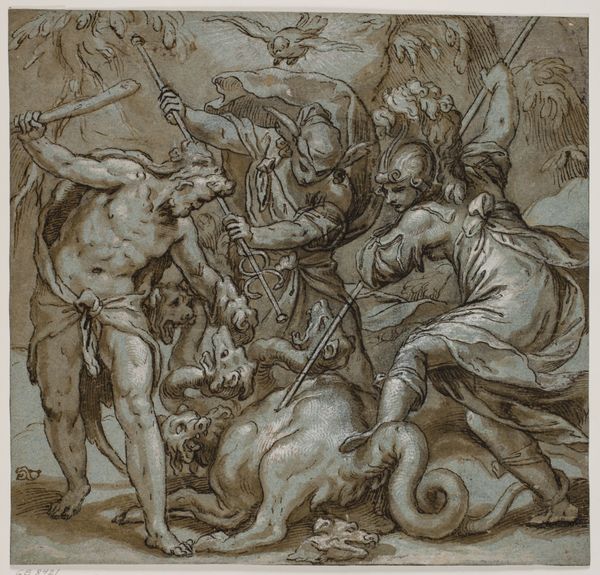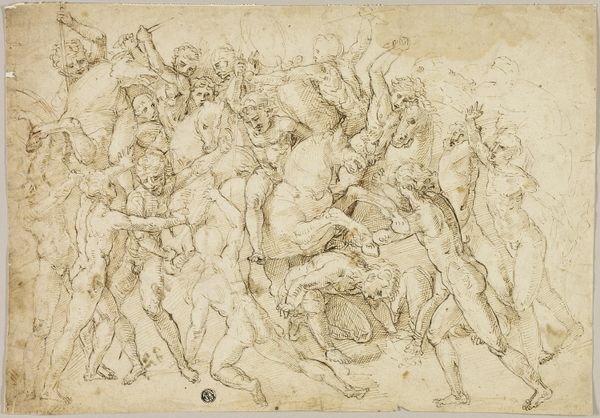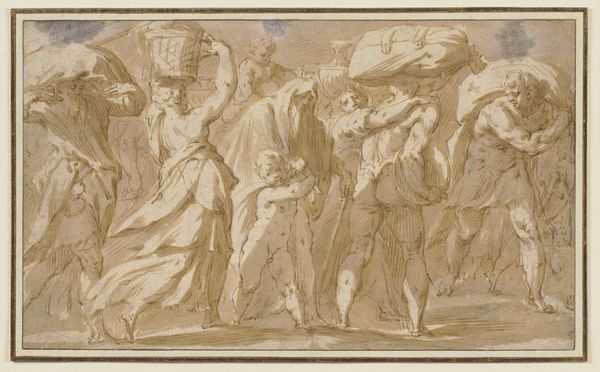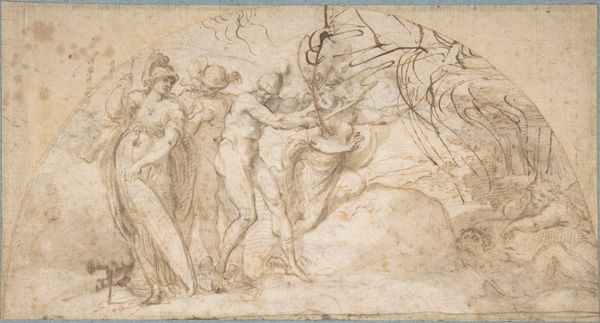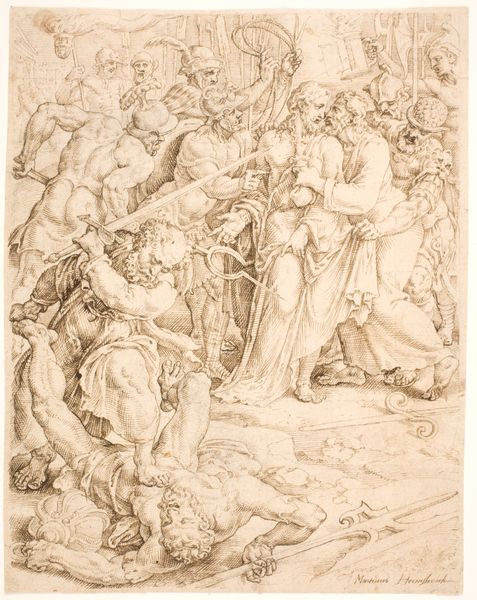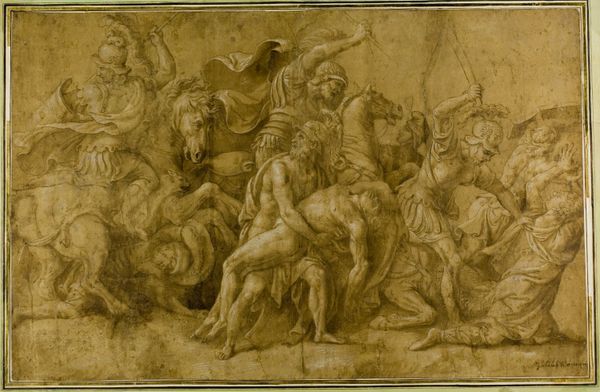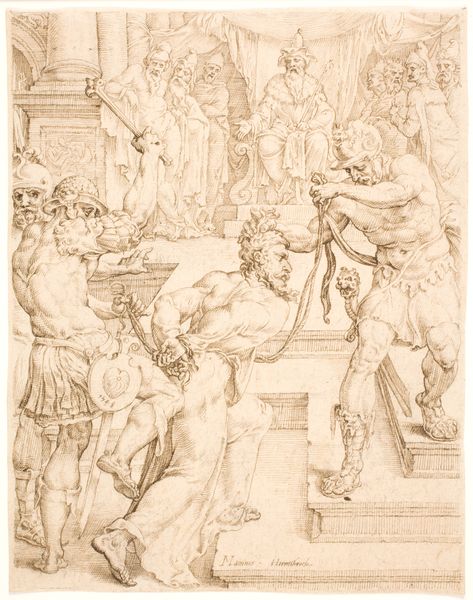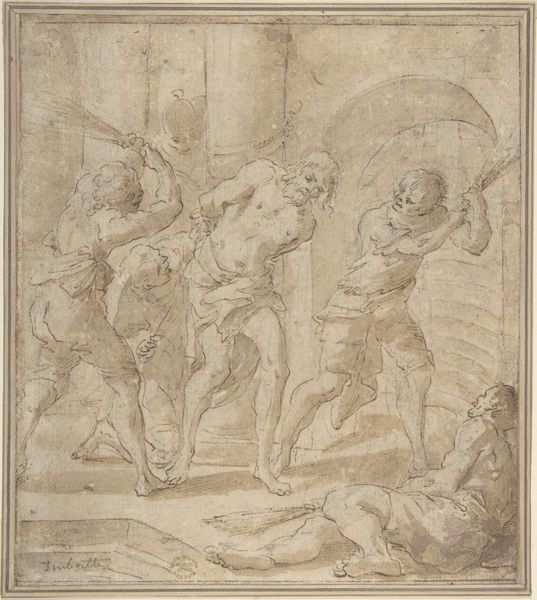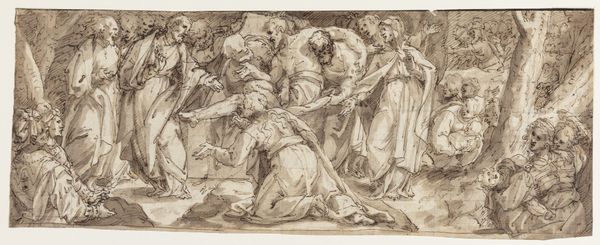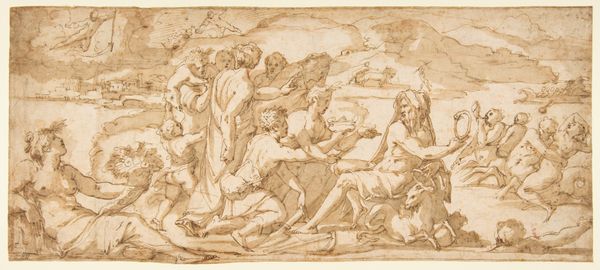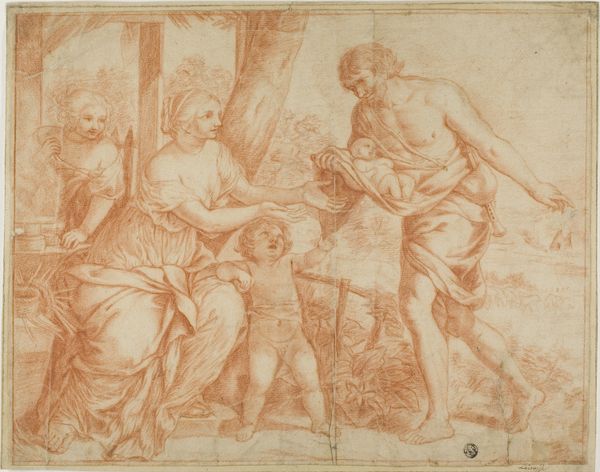
Martyrdom of St. Andrew 1690 - 1753
0:00
0:00
drawing, print, charcoal
#
drawing
#
narrative-art
#
baroque
# print
#
charcoal drawing
#
figuration
#
charcoal art
#
oil painting
#
charcoal
#
history-painting
Dimensions: 5 3/16 x 7 3/4 in. (13.1 x 19.7 cm)
Copyright: Public Domain
Editor: Here we have Ferdinand Delamonce's "Martyrdom of St. Andrew," likely created sometime between 1690 and 1753. It appears to be a charcoal drawing, maybe also a print? The scene is incredibly intense, and you can feel the struggle just looking at it. What draws your eye in this piece, and what story do you think Delamonce is trying to tell? Curator: The agony is practically radiating off the page, isn't it? My gaze is immediately snagged by the figures straining around St. Andrew and his cross—such robust characters rendered in delicate charcoal. Think about Delamonce, back then. This was a time when drama reigned supreme. The Baroque period relished in raw emotion and spiritual intensity, which is exactly what’s delivered in this study. It has the unmistakable air of immediacy – like capturing a fleeting, profound feeling on paper. What do you think of how Delamonce uses light and shadow in this work? Editor: I see what you mean! The dramatic contrasts certainly heighten the emotion. And you are right about Baroque era enjoying "drama." Is it just me, or does the circular composition also add to the feeling of being pulled into the center of the action? Curator: Exactly! It’s like a vortex, sucking us right into the heart of the martyrdom. I suspect this was not a standalone work. Drawings like this often functioned as studies for larger paintings or engravings, a way for the artist to wrestle with composition and light before committing to a more permanent medium. There is such expressive, frenetic energy present; what's also so moving, to me, is how Delamonce can use charcoal so poetically, to convey such violent suffering. Editor: That's fascinating! I hadn't considered its use as a study, but that makes perfect sense. Thinking about it as a step in a larger process gives me a new appreciation for the details he captured. Curator: Me too! And that’s the wonderful thing about art – the more you look, the more you find.
Comments
No comments
Be the first to comment and join the conversation on the ultimate creative platform.
